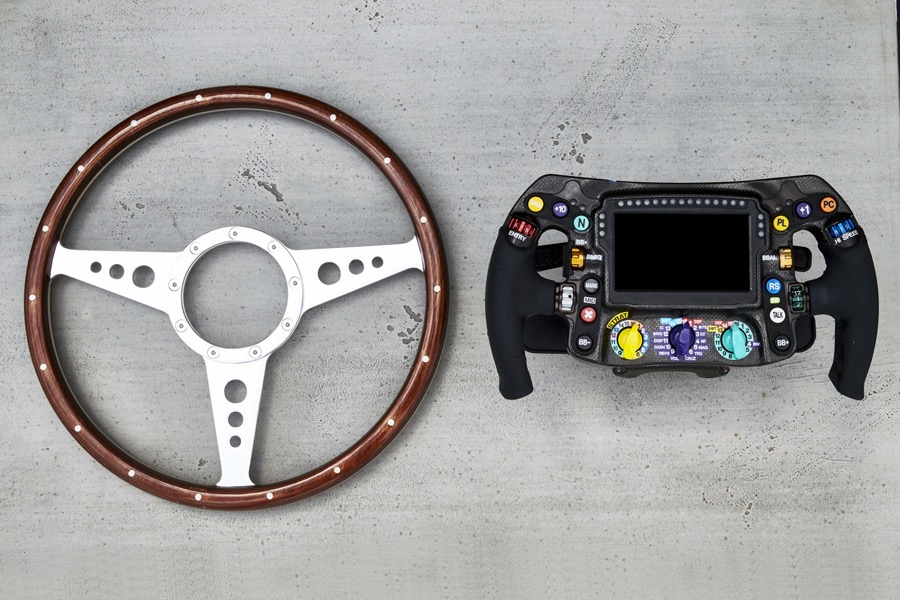Formula One: From Monaco to Main Street
December 31, 2020
Have you ever driven in or seen a car with a hybrid engine? What about a car with ceramic brake discs, carbon fiber body panels, a clutch-less transmission, or a push-button ignition? Ever wonder how manufacturers developed these innovations? The answer, in many cases, is baptism by fire in the motorsport arena – more specifically, in Formula One.
The current F1 grid has 5 teams which are each backed by road car manufacturers. These are Ferrari, Mercedes, McLaren, Renault, and Alfa Romeo, the first four of which have all been successful contenders for championships in the sport. That is not to mention other teams from the past, such as BMW, Toyota, and Honda, the last of which has returned to Formula One for the last several seasons as an engine supplier for Red Bull Racing and its junior team AlphaTauri. Many technological advances that these manufacturers have introduced into their road cars were first developed by their affiliated racing teams. There are many inventions which we could discuss here, but for the purposes of this article, we will focus on just a few.
In 2014, the FIA implemented a drastic rule change for the F1 season. The usual 2.4-liter V8 engines were replaced by hybrid V6 power units. The new Hybrid Era began Mercedes’s dominance of the sport. But what did this change mean for road cars? Even though it took the teams some time to figure out how to optimize the performance and reliability of the new power units, it did not take them long to begin implementing such developments in road cars once they had. Ferrari introduced its first hybrid-powered production car in the striking, alien-looking V12 powered LaFerrari. It was the most powerful Ferrari when it was released, as well as for some time after. Other manufacturers quickly followed suit. Even the economy-focused Toyota Prius can be counted as an important pioneer in the sustainability developments of the modern road car’s engine.
Once the standard, many would agree that manual stick shift transmissions are now obsolete. Inventions such as paddle shifting transmissions and double-clutch transmissions were developed in motorsport to replace the stick shift. Racing engineers knew that no matter how fast a world-class driver could shift using a manual transmission, a machine could do so quicker. The paddle-shifting transmission was born of the desire to go faster and faster still. Yet the drivers still had the control they needed over their cars. For instance, F1 drivers have dual-clutch paddles mounted to the steering wheel along with paddle shifters. They use the clutch paddles to feed the power into the engine from a standstill, whether it be a race start or a pitstop. Eventually, these transmissions made their way into many production cars. For modern-day road cars, the manual transmission is now a rarity, with many manufacturers not even giving customers a choice of manual or automatic.
Similar to the rise of the automatic transmission, there is another advancement that many new drivers today may take for granted: the push-button start. The reasons for such a change are pretty straightforward. Using a button to start the engine is easier and simpler for the driver. On the racetrack, it means a quicker start to a driver’s race and thus a quicker getaway. In some cars such as Porsches, the button is on the left side of the steering wheel rather than the right. This is an homage to Porsche’s racing heritage, as older racing cars had the ignition button on the left side of the cockpit so the engine could be started with the left hand and the car shifted into first gear with the right all in an instant.
As mentioned previously, the number of technological innovations found in modern-day road cars that were developed on the racetrack goes far beyond the examples mentioned here. Believe it or not, there are many advancements made in Formula One and other areas of motorsport which are used outside of automobile development altogether, such as sensors used during surgery or data-recording systems that help monitor hospital patients. Earlier this year, the seven UK-based F1 teams coordinated for Project Pitlane to assist the government in dealing with the Coronavirus by pooling their resources and engineering expertise to develop a CPAP machine which was so effective that it saved 50% of its users from a ventilator and intensive care. Technology from Formula One and other motorsports has permeated many aspects of our daily lives, and every expectation is that it will continue to do so, helping us live faster longer.


